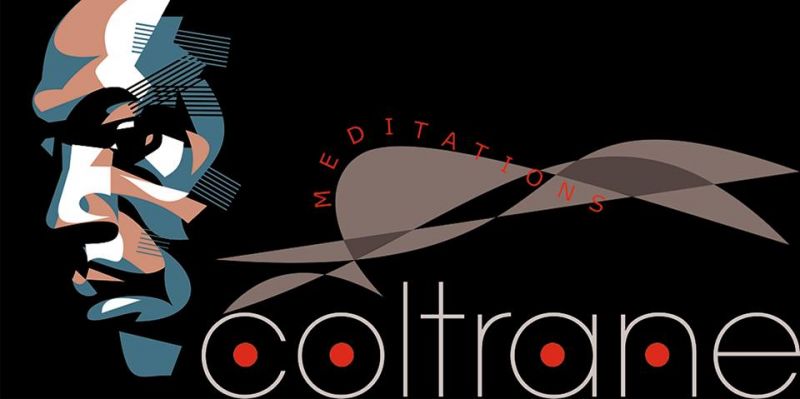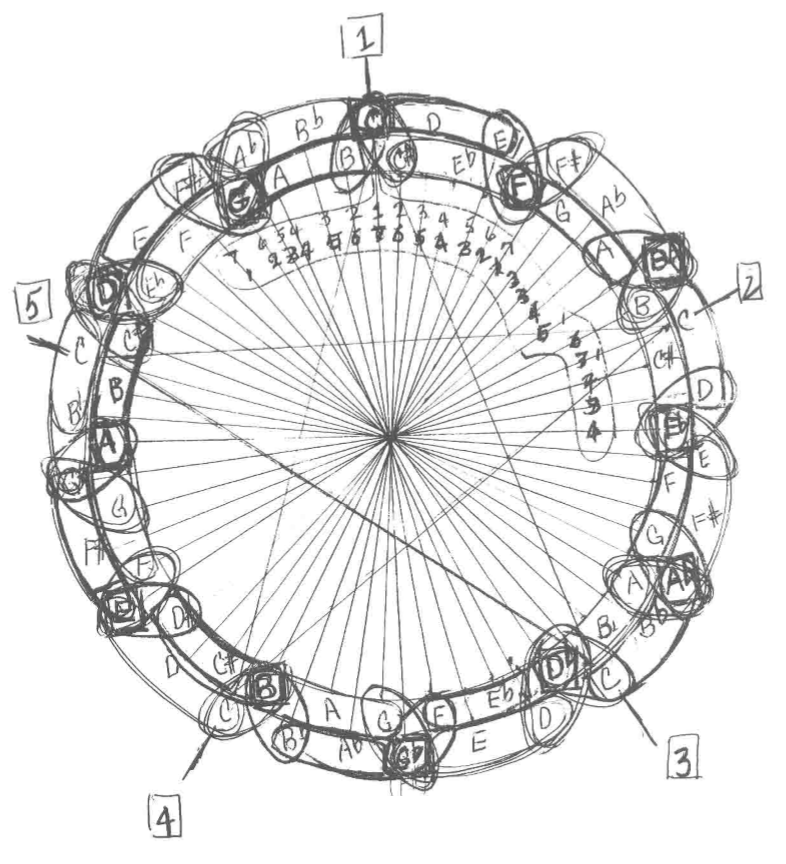Banner artwork by Dimitar Traychev
February 19, 2022Artist “Impression” (Review): John Coltrane
Those of you who have been visiting Roel’s World before might have read my other articles about John Coltrane. In case you haven’t, I bet you will enjoy those … later more about that.
This “review” article is something totally different. I am not going to analyze John Coltrane’s compositions and solos, no music theoretical explanations … none of that all. Why? Well, I’ve done so partially in the articles mentioned above and I’d rather like to make this article more “personal” … Why did I “fall in love” with his music? And when? What tracks do I like best? … So, no heavy theoretical article, but one straight from the heart.
The first time …
The first time I heard John Coltrane was when I heard the album “Kind of Blue” of Miles Davis. I ended up listening this album when I was looking for more recordings of Cannonball Adderley, a saxophonist I started listening to at the end of my teenage years.
As with most beginning musicians who like to play Jazz “So What” is a Jazz standard one must know … often played at jam session.
I remember that at first I didn’t like Coltrane’s sound and soloing that much … unlike Adderley (who in general has an “upbeat” somewhat “playful” even “funky” sound and articulation and very melodic solos), Coltrane had a more “melancholic” (sometimes even a little “nasal”) sound and was much more “harmony” oriented in his soloing, not something I was very comfortable with (harmonic progressions) at that time, I mostly played “by ear”. At that time I had not gone much further in my musical “development” then listening to the “old Swingers” (like “The Hawk“, Webster and Hodges) some Jazz-rock (like David Sanborn), Funk legend Maceo Parker and I had just began “checking out” Charlie Parker and Cannonball Adderley. Let’s just say that I wasn’t ready for Coltrane yet.
I sometimes compare the development in music with wine (but you could think of Whiskey instead if you prefer that). When you drink wine for the first time, you are a little “confused”. It has a strange somewhat sour taste and you are wondering why the others seem to enjoy it so much. You rather feel like grabbing a bear instead, something you got used to easily. It comes in a sturdy bottle, so no worries about braking an expensive wine glass either …
Over time you are curious though. Bears have become so “common” that you like to taste “something else” for a change. So you order a glass of wine. The bar tender asks you: “what kind?”, but you have no clue yet. The bar tender pours you commonly appreciated (but cheap) wine. You start drinking and figure out that that initially sour taste from that first glass wasn’t that bad, in fact, it stimulates your taste buds in a way other drinks had not so far.
You are still wondering, what is the fuss about wine anyway? You heard some friends use the word “bouquet” and other “fancy” words like “Swirling” the wine, the “legs” or “tears” that form in the glass … and you are wondering if you have ended up in some odd abstract movie. But hey, you don’t want to be a “killjoy”, so you “tag along”. In time you figure out there is more to wine then just “chugging it down” like with a bear. You learn to see, smell and taste all the nuances, you become able to distinguish and recognize the more complex structure of the “bouquet” and finally appreciate it for all it has to offer.
John Coltrane is like a unique and exquisite Whiskey that you need to “developed the taste” for (much alike with Wine) to experience the unique qualities and complexity of it’s “bouquet”. When I heard John Coltrane for the first time, I hadn’t developed the taste for his music yet, I was still “drinking bear”.
The first time I really started “feeling” Coltrane was in the first year of my study and the Constantijn Huygens Conservatory (nowadays ArtEZ). With fellow students we formed a Jazz Quintet: Drums, Double Bass, Piano, Alto Sax and (me on) Tenor Sax.
When looking for suitable repertoire the album “Cannonball & Coltrane” could not be “ignored”.
I did not only listened extensively to the album, and in particular the track “Wabash”, I started to “jot down” the theme and a solo chorus or two. Half of your education as Jazz musician comes by listening and transcribing the music you feel inspired by. It teaches you to “listen” while playing, to listen to timing, articulation, intonation, phrasing … it’s like learning the various accents and dialects within the Jazz Language … and it extends your “musical vocabulary” in a way you can’t just from “book-practice”, because you’d miss out on all the “Jazz slang”.
The first time I really “fell in love” with Coltrane’s music was when I heard Blue Train. It felt like everything had “come together”. The first ever Bluesy Jazz recording I (consciously) listened to was “Blues For Yolande” from the album “Coleman Hawkins Encounters Ben Webster” (the reason I wanted to learn to play the saxophone). But Blue Train is another full step up in the “evolution”
Today “Blue Train” is still one of my all time favorite tracks (and albums). I started listening to other (“mainstream”) albums like: “Soultrane“, “Coltrane Plays the Blues“, “Ballads“, “Impressions“, “My Favorite Things” and “Coltrane’s Sound“.
Besides “My Favorite Things” and “Impressions” another one of my all time favorite Coltrane pieces is Equinox. I use to play this pieces with a Jazz Quartet during the time I lived in Varna, Bulgaria.
There is an interesting “theory” behind this piece I blogged about here at Roel’s World, might be fun to check out later.
For his more “abstract” (Avant-Guarde / Free-Jazz) albums I had not grown enough as listener and musicians yet.
After 2013/2014 that changed for me. This happened due to an article Corey Mwamba wrote called: “Way of Seeing Coltrane” where he wrote about the “Coltrane Circle” (drawing on the left).
I had just started blogging myself (from 27 September 2013 at Roel’s World) and had (still have) a fascination for the relationship between Music Math / Geometry. Seeing the drawing of the “Coltrane Circle” was like “a red flag to a bull” (coincidentally my sun sign – Taurus).
The result was me diving deeper into the theories behind Coltrane’s music and as result my own blog article about the “Coltrane Cirle” on Roel’s World.
Perhaps this was the next “step” I needed to make in my understanding of his music to fully embrace his masterpiece “A Love Supreme” and to be “open” to the more abstract / Free-Jazz albums like “Ascension”.
For listening to his Free-Jazz albums I still need a particular “mindset”, it is just overwhelming, I don’t think I will ever fully “grasp” what he (and his formation) did. Not the kind of music you will put on your headphones while having a casual stroll through the park or along a beach, you need to be “active”, “participate” as listener.
I think you have a clear picture now why John Coltrane is one of my “icons”? Why I love and admire his music (well, most of it)? He got above and beyond where most musicians will ever be able to go. I know I will never be able to play like that, or compose/produce music at that level. But that’s perfectly fine, who else would be there to admire then?
In my “man cave” (attic of the house) there are only 3 Jazz related artworks on the wall. They are part of the “Jazz Icons” series by Dimiter Traychev. They – John Coltrane (see article banner), Miles Davis & Michael Brecker – are the first “faces” I see when I wake up in the morning.
If you enjoyed reading this article, you might like: “John Coltrane’s Tone Circle” and “The Geomertry of John Coltrane’s Music” as well.


